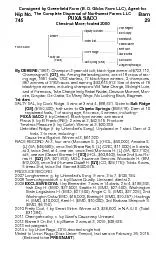PPT-The VVV Templates Project
Author : eartala | Published Date : 2020-07-04
전영범 성현일 KASI 한장희 이종택 한국교원대학교 Richard de Grijs Kavli Institute for Astronomy amp Astrophysics Rodolfo Angeloni la
Presentation Embed Code
Download Presentation
Download Presentation The PPT/PDF document "The VVV Templates Project" is the property of its rightful owner. Permission is granted to download and print the materials on this website for personal, non-commercial use only, and to display it on your personal computer provided you do not modify the materials and that you retain all copyright notices contained in the materials. By downloading content from our website, you accept the terms of this agreement.
The VVV Templates Project: Transcript
Download Rules Of Document
"The VVV Templates Project"The content belongs to its owner. You may download and print it for personal use, without modification, and keep all copyright notices. By downloading, you agree to these terms.
Related Documents














